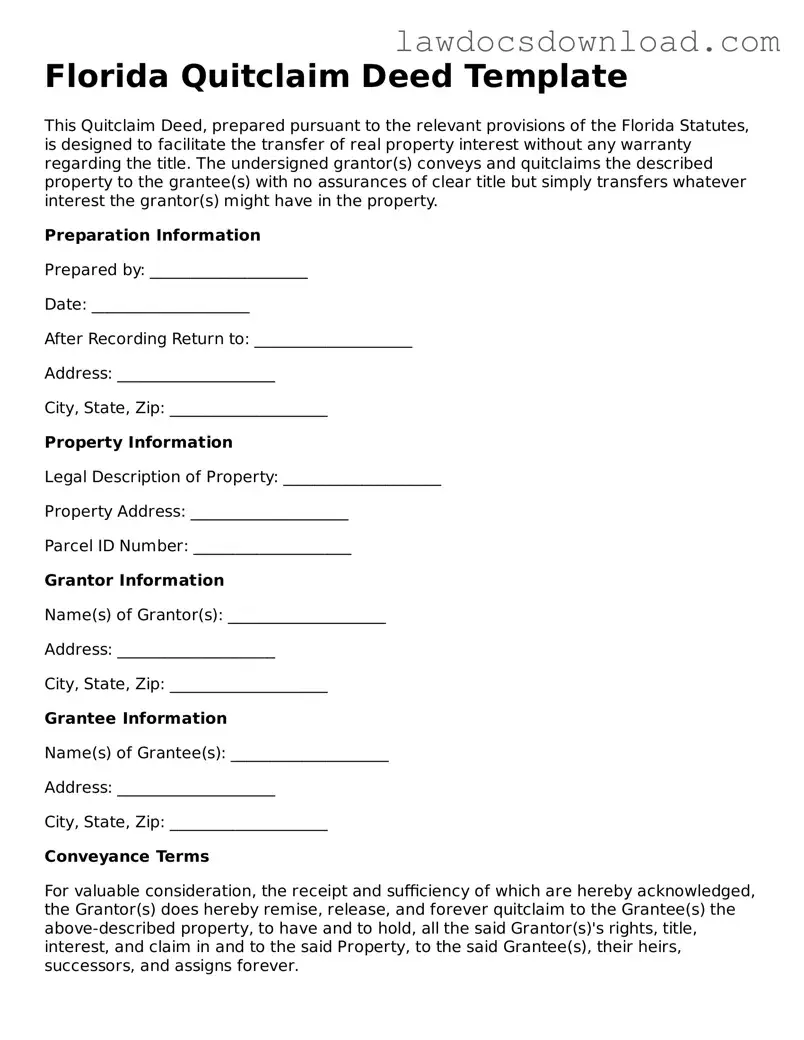Florida Quitclaim Deed Template
This Quitclaim Deed, prepared pursuant to the relevant provisions of the Florida Statutes, is designed to facilitate the transfer of real property interest without any warranty regarding the title. The undersigned grantor(s) conveys and quitclaims the described property to the grantee(s) with no assurances of clear title but simply transfers whatever interest the grantor(s) might have in the property.
Preparation Information
Prepared by: ____________________
Date: ____________________
After Recording Return to: ____________________
Address: ____________________
City, State, Zip: ____________________
Property Information
Legal Description of Property: ____________________
Property Address: ____________________
Parcel ID Number: ____________________
Grantor Information
Name(s) of Grantor(s): ____________________
Address: ____________________
City, State, Zip: ____________________
Grantee Information
Name(s) of Grantee(s): ____________________
Address: ____________________
City, State, Zip: ____________________
Conveyance Terms
For valuable consideration, the receipt and sufficiency of which are hereby acknowledged, the Grantor(s) does hereby remise, release, and forever quitclaim to the Grantee(s) the above-described property, to have and to hold, all the said Grantor(s)'s rights, title, interest, and claim in and to the said Property, to the said Grantee(s), their heirs, successors, and assigns forever.
Signature Section
The undersigned Grantor(s) executed this Quitclaim Deed on this day: ____________________
____________________________________
Signature of Grantor
____________________________________
Signature of Second Grantor (if applicable)
State of Florida
County of ____________________
This document was acknowledged before me on (date) ____________________ by (name of Grantor) ____________________ who is personally known to me or has produced ____________________ as identification and who did/did not take an oath.
____________________________________
Signature of Notary Public
Printed Name: ____________________
Commission Number: ____________________
My Commission Expires: ____________________
